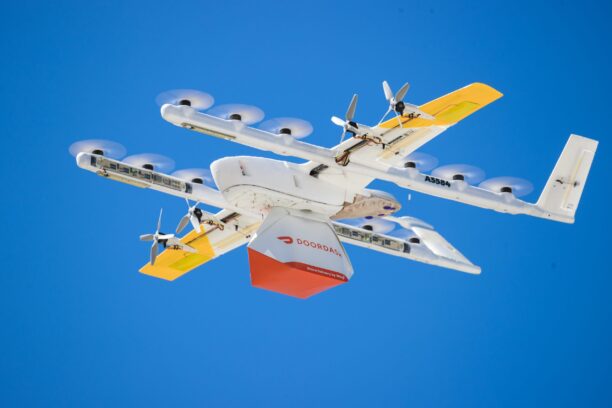FAA Provides Key Updates on Drone Policy at Commercial UAV Expo 2024
In a session at the Commercial UAV Expo in Las Vegas this morning, representatives from the Federal Aviation Administration (FAA) delivered significant updates on drone policy, offering a glimpse into the future of drone regulations. The panel, moderated by Lisa Ellman, Executive Director of the Commercial Drone Alliance, featured top FAA officials, including Tim Arel, Chief Operating Officer of the Air Traffic Organization; Brandon Roberts, Director of Rulemaking; Jeffrey Vincent, Executive Director of the UAS Integration Office; and Bailey Edwards, former FAA executive and current Head of Government Affairs at drone delivery provider Wing.
Part 108 Rulemaking on the Horizon
A central focus of the discussion was the FAA’s progress on Part 108, a critical rulemaking effort that addresses beyond visual line of sight (BVLOS) operations. Jeffrey Vincent emphasized the importance of the rule in enabling scalable BVLOS operations. “We’ve been extremely busy with Part 108 and UTM [Unmanned Traffic Management],” Vincent explained, adding that a robust UTM system is essential for achieving true, scalable BVLOS. He shared that the FAA is aiming to publish the Notice of Proposed Rulemaking (NPRM) in the Federal Register by the end of this year.
Vincent also highlighted the ongoing work at the Dallas key site, which is advancing BVLOS flight by enabling commercial drone operations to gain experience and gather data. “One of the things we’ve learned early on is what we don’t know,” he said, referencing the complexities of drone operations.
Waivers and Streamlined Processes
Brandon Roberts discussed the FAA’s ongoing efforts to streamline waiver processes for drone operations. “One of the things we’re proud of at the agency is that we’ve issued hundreds, if not thousands, of waivers and permissions this year,” Roberts noted. He stressed the importance of gathering input from the industry to shape the future of BVLOS operations. “We need to see what happens when things go wrong, but also what happens when things go right.”
Roberts also acknowledged the challenges of moving from waivers and exemptions to scalable operations. He emphasized the need for clear policy direction, noting that public understanding of these rules is key to broader acceptance and implementation. “We need to get the rule published so that the public understands where we are going,” he said.
Environmental Review Challenges
Bailey Edwards highlighted a major obstacle in drone package delivery and other commercial operations at scale: the environmental review process. Under the National Environmental Policy Act (NEPA), reviews can be time-consuming and expensive. Edwards pointed out that the process is often hyper-localized, making it difficult to scale operations efficiently. “We recognize that there are new flexibilities in FAA Reauthorization, but environmental reviews remain a challenge,” Edwards said. He argued that a more programmatic approach could enable faster deployment of drone delivery services.
Complexities of U.S. Airspace and cUAS Concerns
Tim Arel underscored the unique challenges the FAA faces in managing the largest and busiest national airspace in the world. “The U.S. is uniquely positioned—there is no other country with the diversity of activity in our airspace,” Arel said. He stressed the importance of balancing innovation with safety and national security. “We want to enable the good but prevent the bad,” he added, noting that concerns around counter-UAS (cUAS) operations are a critical aspect of this balance.
Arel highlighted the need for authority to close airspace when necessary, particularly in the context of security and public safety. However, he cautioned that excessive restrictions could stifle the drone industry. “If you put all of the pieces of infrastructure together, you could end up making it impossible to fly a drone over huge areas,” he said, emphasizing the need for careful regulation and safe and responsible flight operations.
The Future of Drone Integration
Looking ahead, the FAA officials expressed optimism about the future of drone integration into the national airspace. Roberts mentioned ongoing work on drone regulations and new rules for general aviation: including the Modernization of the Special Airworthiness Certificate (MOSAIC), which aims to create a faster, cheaper, and more flexible certification process, and recent developments in the certification of powered-lift aircraft, suggesting that similar frameworks could be applied to drones.
The panel also touched on drone operations over the high seas, a key focus for Vincent’s UAS Integration Office. “We have to look at certification of a small drone from a different perspective because it’s not the same as a passenger jet,” he explained, emphasizing the unique challenges of certifying drones for international and high-seas operations.
As the session concluded, it was clear that while challenges remain, the FAA is making significant strides toward enabling broader, safer, and more scalable drone operations across the U.S. airspace.
Miriam McNabb is the Editor-in-Chief of DRONELIFE and CEO of JobForDrones, a professional drone services marketplace, and a fascinated observer of the emerging drone industry and the regulatory environment for drones. Miriam has penned over 3,000 articles focused on the commercial drone space and is an international speaker and recognized figure in the industry. Miriam has a degree from the University of Chicago and over 20 years of experience in high tech sales and marketing for new technologies.
For drone industry consulting or writing, Email Miriam.
TWITTER:@spaldingbarker
Subscribe to DroneLife here.


